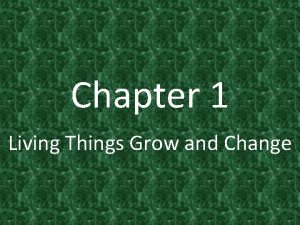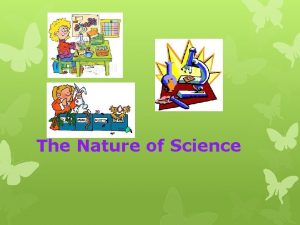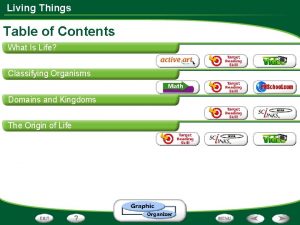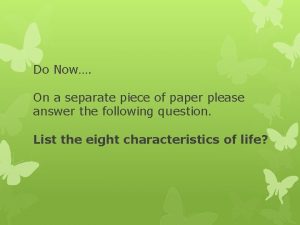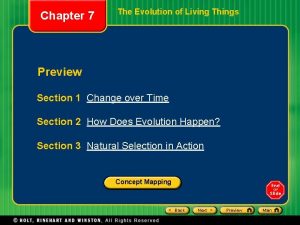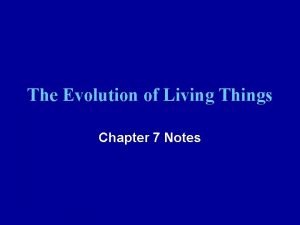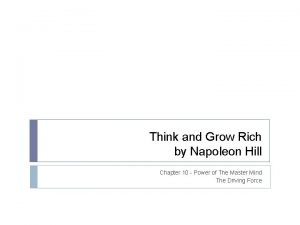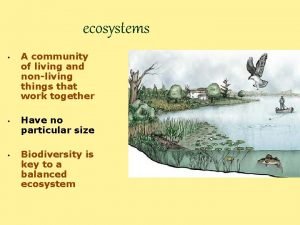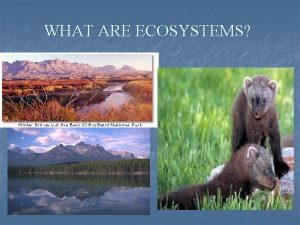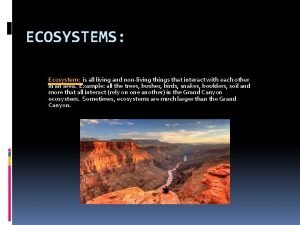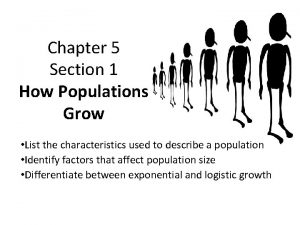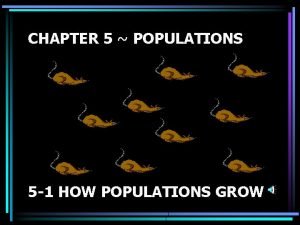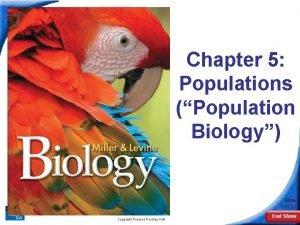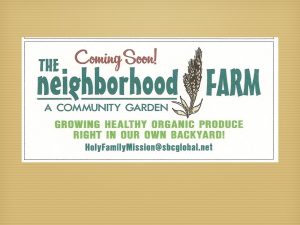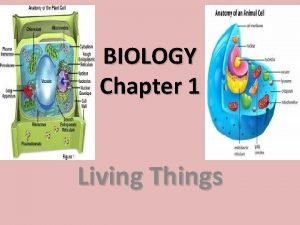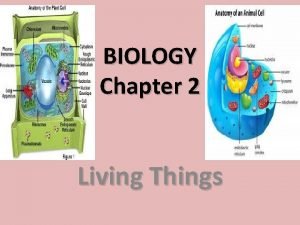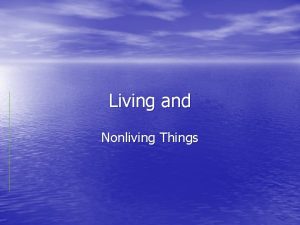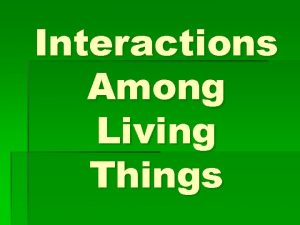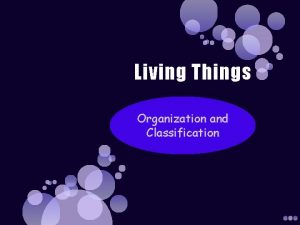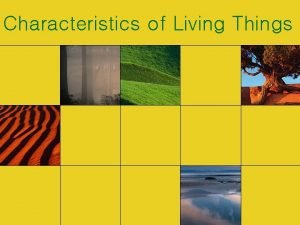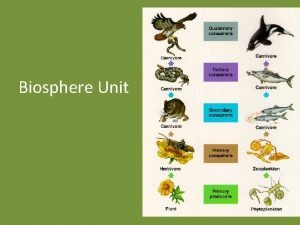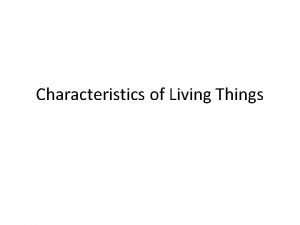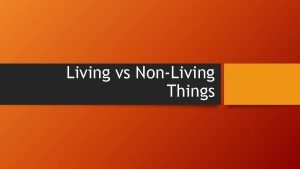Chapter 1 Living Things Grow and Change Living





















- Slides: 21

Chapter 1 Living Things Grow and Change

Living Things and Their Needs • Living things grow, respond, and reproduce v. Reproduce – make more of one’s own kind. • Living things are called organisms. • Living things need food, water, gases, and space. • Living things get what they need from the environment. v. Environment – all the living and nonliving things that surround an organism. • Living things are made of many small parts called cells. v. Cells – the building blocks of life.

Living and Nonliving Living Things Nonliving Things

Plant Life Cycles • Seed – a structure that can grow into a new plant. • Embryo – the young plant that is just beginning to grow. Step 1: A seed is planted in the soil. Step 2: The seed germinates. Roots start growing down into the soil. Step 3: The roots grow longer, and a stem pushes up out of the ground. Step 4: The plant grows leaves. It starts to make its own food. Step 5: The plant grows into an adult. It can reproduce and make new seeds.

Plant Life Cycles • Flower (Cone) – the plant structure that makes seeds. • Pollination – the movement of pollen from the male part of the flower to the female part. • Fruit – a structure that holds seeds. • Life Cycle – the stages in an organisms life.

Life Cycle • When a seed is planted it germinates (begins to grow) • The seed grows into a small plant called a seedling • The seedling grows into an adult plant which reproduces by making new seeds • The new seeds travel to the soil to start the process again • Flowering Plants – make seeds inside of flowers. – Example: Cherry Tree • Conifers – make seeds inside of cones. – Example: Pine Tree

Parts of a Plant Flower leaves Stem Roots

Basic Animal Life Cycle • • • An animal is born It grows It reproduces as an adult In time it dies Body breaks down and becomes part of the soil

Animal Life Cycles • Different animals change in different ways. – Some are born looking like their parents and others are not. – The way an animal changes with age is part of its life cycle.

Amphibians and Most Insects • Go through a metamorphosis –A series of changes in which an organism’s body changes forms. • Life Cycle begins as an egg


Reptiles, Fish, and Birds • Most lay eggs • Animal grows inside the egg • When it hatches it looks like the adults • Grows into an adult and reproduces


Mammals • Born live • Look much like parents from the start • Grow into an adult and reproduce

Food Chains • Food chain – shows how energy passes from one organism to another. – Producer – organism that makes its own food. » First in a food chain » Example – green plants & algae – Consumer – organism that eats other organisms. » All animals » One food chain may have many – Decomposer – an animal that breaks down dead plant and animal material. (FBI) » Fungus, bacteria, and invertebrate


Food Web • Several connecting food chains • Herbivores – organisms that eat mostly plants • Carnivores – organisms that eat mostly other animals • Omnivores – organisms that eat both plants and animals


Habitats • Habitat – the type of environment a living thing needs in order to survive • Climate – the pattern of weather in a place over a long time • There are many different kinds of habitats

Structures • Plants and animals have structures that help them get the things they need from their environment – Structure – a part of a living thing • Plants – roots, stems, leaves, etc. • Animals – legs, wings, beaks, etc.

Adaptations • Organisms must live in a habitat that provides their needs. • Adaptations help living things survive in an environment – Adaptation – a special feature or behavior that helps a living thing survive.
 Living things grow and change
Living things grow and change Life's structure and classification answers key
Life's structure and classification answers key Living things grow images
Living things grow images Living things table
Living things table Looking at living things
Looking at living things Separate piece of paper
Separate piece of paper Blue things
Blue things This organelle often ships proteins to the golgi apparatus
This organelle often ships proteins to the golgi apparatus Cgl barnet referral
Cgl barnet referral Chapter 7 the evolution of living things answers
Chapter 7 the evolution of living things answers Chapter 7 the evolution of living things answers
Chapter 7 the evolution of living things answers Think and grow rich chapter 10
Think and grow rich chapter 10 Ecosystems examples
Ecosystems examples A community of living and nonliving things
A community of living and nonliving things Do all plants have roots
Do all plants have roots Unicellular vs multicellular
Unicellular vs multicellular Non living things in freshwater
Non living things in freshwater Things in ecosystem
Things in ecosystem Chapter 5 lesson 1 how populations grow answer key
Chapter 5 lesson 1 how populations grow answer key Chapter 5 lesson 1 how populations grow
Chapter 5 lesson 1 how populations grow 5.1 how populations grow
5.1 how populations grow Examples of physical changes
Examples of physical changes
